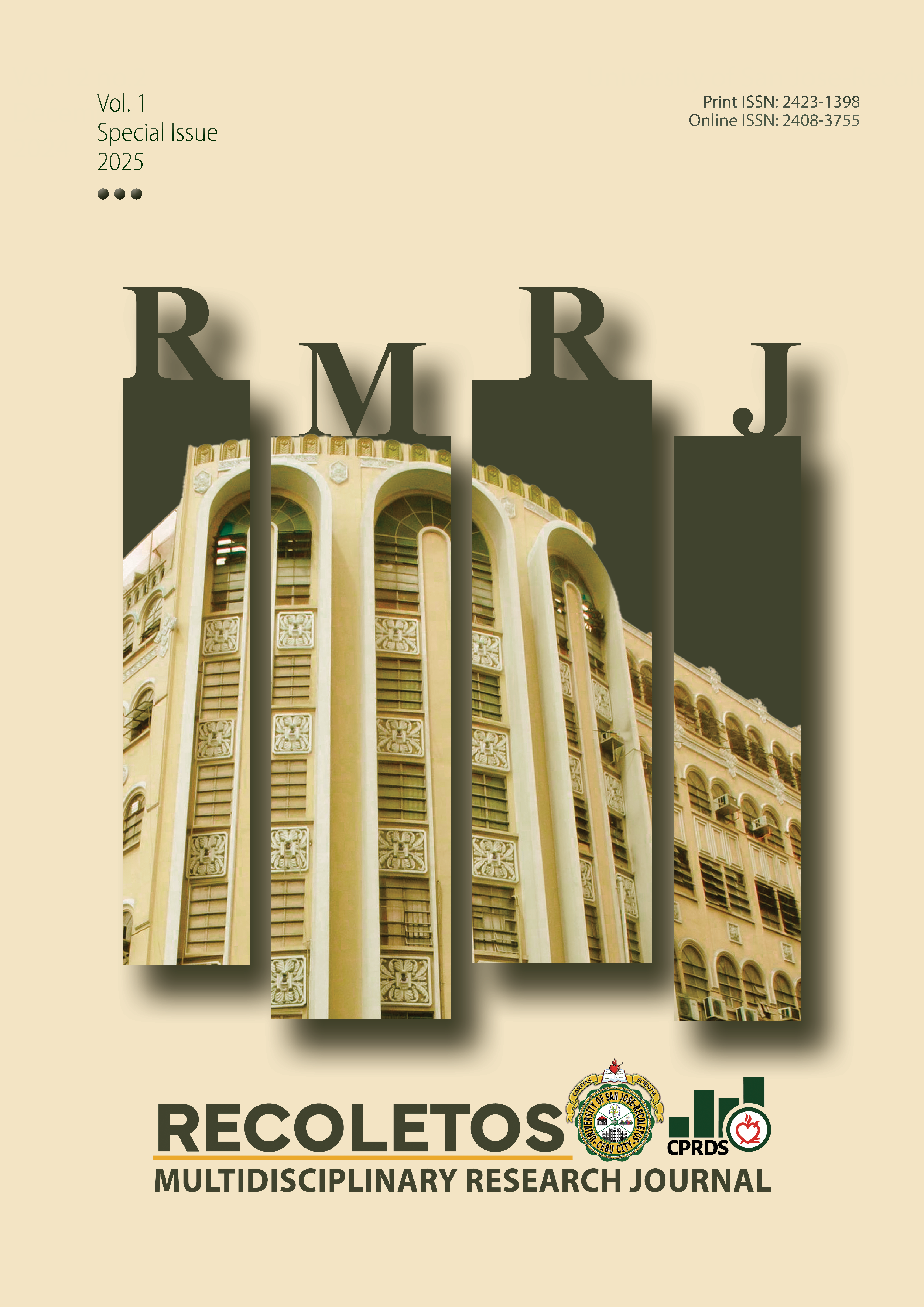Pitik: A Cebuano-Binisaya Intent-Based Chatbot for Cardiovascular Disease Patient Profiling and Risk Factor Recommendations
DOI:
https://doi.org/10.32871/rmrj25si.t2407Keywords:
patient profiling, Cardiovascular Disease Risk Factor Assessment, community-based healthcare, Gricean Maxims, medical chatbotAbstract
Background: Cardiovascular diseases (CVDs) remain the leading cause of death in the Philippines, affecting one in six Filipinos and accounting for 20% of all deaths. Despite the existence of community-based healthcare programs, patient profiling continues to be done manually, resulting in inefficiencies in cardiovascular risk assessment. To address this, Pitik, a Cebuano-Binisaya intent-based chatbot, was developed to streamline cardiovascular risk profiling and data collection, particularly in underserved areas.
Methods: This study collaboratively employed Action Research to refine Pitik through three software development iterations. The chatbot integrated the Diag-Ex framework alongside Pre-Intent and Post-Intent Matching algorithms. Gricean Maxims guided its conversational design to enhance communication accuracy and user interaction quality.
Results: The iterative development process significantly improved Pitik's accuracy, reduced communication errors, and increased user engagement. Evaluations demonstrated the chatbot's effectiveness in processing user inputs and providing structured cardiovascular risk assessments. These improvements highlight Pitik's growing capability in delivering accessible and reliable health information.
Conclusion: Pitik presents a scalable and linguistically inclusive AI solution for cardiovascular risk assessment within Cebuano-Binisaya-speaking communities. The study underscores the potential of AI-driven chatbots to enhance community-based patient profiling, reduce manual workloads, and improve healthcare access in rural areas. Future work will involve expanding Pitik's features and evaluating its real-world impact in broader healthcare contexts.
References
Cacciata, M. C., Alvarado, I., Jose, M. M., & Evangelista, L. S. (2021). Health determinants and risk factors for coronary artery disease among older Filipinos in rural communities. European Journal of Cardiovascular Nursing, 20(6), 565-571. https://doi.org/10.1093/eurjcn/zvaa039
Casey, J. A., Schwartz, B. S., Stewart, W. F., & Adler, N. E. (2016). Using electronic health records for population health research: A review of methods and applications. Annual Review of Public Health, 37, 61-81. https://doi.org/10.1146/annurev-publhealth-032315-021353
D'Agostino, R. B., Sr., Vasan, R. S., Pencina, M. J., Wolf, P. A., Cobain, M., Massaro, J. M., & Kannel, W. B. (2008). General cardiovascular risk profile for use in primary care: The Framingham Heart Study. Circulation, 117(6), 743-753. https://doi.org/10.1161/CIRCULATIONAHA.107.699579 .
Evans, R. S. (2016). Electronic health records: Then, now, and in the future. Yearbook of Medical Informatics, 25(S01), S48-S61. https://doi.org/10.15265/IYS-2016-s006.
Grice, P. (1975). Logic and conversation. In P. Cole & J. L. Morgan (Eds.), Syntax and semantics, 3, 41-58. Academic Press.
Iyanna, I. S., Kaur, K. P., Ractham, P., Talwar, S., & Islam, A. K. M. N. (2022). Digital transformation of the healthcare sector: What is impeding adoption and continued usage of technology-driven innovations by end-users? Journal of Business Research, 153, 150-161. https://doi.org/10.1016/j.jbusres.2022.08.007
Liwanag, L. M. A., Liwanag, G. L., & Liwanag, L. A. (2024). AI in Anthem: A comparative analysis of the English and Filipino ChatGPT 4 translations from the existing translations of the Philippine National Anthem. Recoletos Multidisciplinary Research Journal, 12(2), 91-102. https://doi.org/10.32871/rmrj2412.02.07
Menachemi, N., & Collum, T. H. (2011). Benefits and drawbacks of electronic health record systems. Risk Management and Healthcare Policy, 4, 47-55. https://doi.org/10.2147/RMHP.S12985
Noceda, A. V. G., Acierto, L. M. M., Bertiz, M. C. C., Dionisio, D. E. H., Laurito, C. B. L., Sanchez, G. A. T., & Loreche, A. M. (2023). Patient satisfaction with telemedicine in the Philippines during the COVID-19 pandemic: A mixed methods study. BMC Health Services Research, 23(1), 277. https://doi.org/10.1186/s12913-023-09127-x .
Quinn, M., Forman, J., Harrod, M., Winter, S., Fowler, K. E., Krein, S. L., Gupta, A., Saint, S., Singh, H., & Chopra, V. (2019). Electronic health records, communication, and data sharing: Challenges and opportunities for improving the diagnostic process. Diagnosis (Berlin), 6(3), 241-248. https://doi.org/10.1515/dx-2018-0036
Radziwill, N. M., & Benton, M. C. (2017). Evaluating quality of chatbots and intelligent conversational agents. arXiv preprint arXiv:1704.04579. https://doi.org/10.48550/arXiv.1704.04579 .
Reyes, A. T., Serafica, R., Kawi, J., Fudolig, M., Sy, F., Leyva, E. W. A., & Evangelista, L. S. (2023). Using the socioecological model to explore barriers to health care provision in underserved communities in the Philippines: A qualitative study. Asian/Pacific Island Nursing Journal, 7, e45669. https://doi.org/10.2196/45669
Sarma, M., Chatterjee, S., Mohanty, S., Puravankara, R., & Bali, M. (2019). Diabot: A predictive medical chatbot using ensemble learning. International Journal of Recent Technology and Engineering, 8(2), Article B2196. https://doi.org/10.35940/ijrte.B2196.078219
Tan, R., Kawaja, A., Ooi, S. P., & Ng, C. J. (2024). Communication barriers faced by pharmacists when managing patients with hypertension in a primary care team: a qualitative study. BMC Primary Care, 25(1). https://doi.org/10.1186/s12875-024-02349-w
Downloads
Published
How to Cite
Issue
Section
License
Copyright (c) 2025 University of San Jose-Recoletos

This work is licensed under a Creative Commons Attribution-NonCommercial 4.0 International License.
Copyright of the Journal belongs to the University of San Jose-Recoletos


